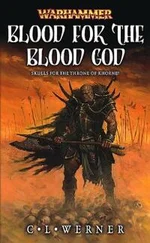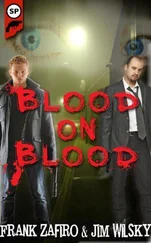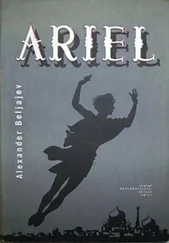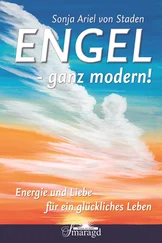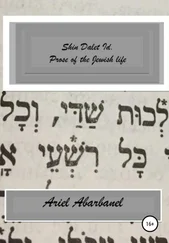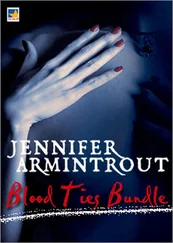Ariel Toaff - Blood Passover
Здесь есть возможность читать онлайн «Ariel Toaff - Blood Passover» весь текст электронной книги совершенно бесплатно (целиком полную версию без сокращений). В некоторых случаях можно слушать аудио, скачать через торрент в формате fb2 и присутствует краткое содержание. Жанр: Религиоведение, на английском языке. Описание произведения, (предисловие) а так же отзывы посетителей доступны на портале библиотеки ЛибКат.
- Название:Blood Passover
- Автор:
- Жанр:
- Год:неизвестен
- ISBN:нет данных
- Рейтинг книги:3 / 5. Голосов: 1
-
Избранное:Добавить в избранное
- Отзывы:
-
Ваша оценка:
- 60
- 1
- 2
- 3
- 4
- 5
Blood Passover: краткое содержание, описание и аннотация
Предлагаем к чтению аннотацию, описание, краткое содержание или предисловие (зависит от того, что написал сам автор книги «Blood Passover»). Если вы не нашли необходимую информацию о книге — напишите в комментариях, мы постараемся отыскать её.
Blood Passover — читать онлайн бесплатно полную книгу (весь текст) целиком
Ниже представлен текст книги, разбитый по страницам. Система сохранения места последней прочитанной страницы, позволяет с удобством читать онлайн бесплатно книгу «Blood Passover», без необходимости каждый раз заново искать на чём Вы остановились. Поставьте закладку, и сможете в любой момент перейти на страницу, на которой закончили чтение.
Интервал:
Закладка:
402
For a useful discussion of this topic, see Blumenkrantz, Juifs et Chrétiens dans le monde occi dental, cit., pp. 194-195, no. 142; Id., Les auteurs chrétiens , cit., p. 163, no. 53.
403
"Carzimasium autem greci vocant amputatis virilibus et virga puerum quod Virdunenses mercatores ob immensum lucrum facere et in Hispaniam ducere solent " ["Virgin boys whose genitals have been amputated are referred to by the Greeks as 'eunuchs'. These boys are castrated by merchants at Verdun at an immense profit and are usually taken to Spain "], cit., in Verlinden, A propos de la place des juifs , cit., p. 33).
404
On the Arab sources attesting to the role of Jewish merchants in the eunuch trade, cfr. Verlinden, L'esclavage dans l'Europe médiévale , cit., p. 716; Id., A propos de la place des juifs , cit., pp. 22.
405
On the rabbinical responses relating to the trade in castrated young slaves and on the role of Lucena [outside Córdoba] as a center for the castrations, see A. Assaf, Slavery and the Slave-Trade among the Jews during the Middle Ages (from the Jewish Sources), in "Zion", IV (1939), pp. 91-125 (in Hebrew); E. Ashtor, A History of the Jews in Moslem Spain , Jerusalem, 1977, vol. I, pp. 186-189 (in Hebrew).
406
The text of Natronai Gaon is reported in Assaf, Slavery and the Slave-Trade , cit., pp. 100-101.
407
Leon de Modena, Historia de' riti hebraici , Venice, Gio. Calleoni, 1638, pp. 80-81.
408
The first to have linked the rise of the Christian stereotype of ritual murder to the feast of Purim and to the hanging/crucifixion of Haman/Jesus was Cecil Roth in his now classic study (C. Roth, Feast of Purim and the Origins of the Blood Accusations , in "Speculum", VIII, 1933, pp. 520-526).Recently following in Roth's footsteps have been Elliot Horowitz and Gerd Mentgen, adding further documents attesting to phenomena of anti-Christian violence during the celebration of Purim (cfr. E. Horowitz, And It Was Reversed. Jews and Their Enemies in the Festivities , in "Zion", LIX, 1994, pp. 129-168, in Hebrew; Id., The Rite to Be Reckless. On the Perpetration and Interpretation of Purim Violence , in "Poetics Today", XV, 1994, pp. 9-54; G. Mentgen, The Origins of the Blood Libel , in "Zion", LIX, 1994, pp. 341-349; Id., Über den Ursprung der Ritualmordfabel , in "Aschkenas", IV, 1994, pp. 405-416). On the status quaestionis , see the precise summary of I.J. Yuval, "Two Nations in Your Womb": Perceptions of Jews and Christians , Tel Aviv, 2000, pp. 179-181 (in Hebrew), and the recent stimulating monograph of E. Horowitz, Reckless Rites. Purim and the Legacy of Jewish Violence , Princeton, (N.J., 2006.
409
On this subject, see T.C.G. Thornton, The Crucifixion of Haman and the Scandal of the Cross , in "Journal of Theological Studies", XXXVII (1986), pp. 419-426; A. Damascelli, Croce maledizione e redenzione. Un' eco di Purim in Galati 3, 13 , in "Henoch", XXIII (2001), pp. 227-241.
410
"Quomodo (judaei) vocant Iesum de Nazaret quem adorant christiani? [...] Dicit quod (inter se) vocant Ossoays et Talui et quando locunt cum Christianis vocant Christo" [“How do the Jews speak of those who adore Jesus of Nazareth ? […] [Amongst themselves] they call him Ossays and Talui but when they are speaking to Christians, they call him Christ”] (cfr. An. Antoniazzi Villa, Un processo contro gli ebrei nella Milano del 1488 Milan , 1986, p. 111).
411
The expression used in the text is "maledicta et ludibriosa passio" [“cursed and filthy passion”] (cfr. Damascilli, Croce, maledizione e redenzione , cit.).
412
Cfr. J.G. Frazer, The Golden Bough , London, 1913, IX, pp. 359-368, 392-407 (translated as I l ramo d'oro. Studio sulla magia e la religione , Turin, 1991).
413
Cfr. Parkes, The Conflict of the Church and the Synagogue , cit., p. 234.
414
Cfr. H. Schreckenberg, Die christlichen "Adversos Judaeos ". Texte und ihr literarisches und historisches Umfeld , Frankfurt am Main - Bern, 1982, p. 543; Mentgen, The Origins of the Blood Libel , cit., pp. 341-343. This last essay stresses the link between Purim , known as the "feast of the lots", and the date upon which the annual lottery of the Jewish community to establish the location of which to carry out the annual ritual murder (Norwich, Valreas, etc.).
415
Natan b. Yechiel, Arukh , Pesar, G. Soncino, 1517, cc. 162v-163r (s.v. shwwr). See also Shoshanat ha' amaqim. 'Emeq ha-Purim. Ozar minhagin we-hanhagot le-chag Purim ("Treasure of the Rites and Customs of the Feast of Purim "), Jerusalem, 2000, pp. 111-112.
416
The custom is reported in the ritual scripts of rabbi Chaim Palagi, Mo'ed le-chol chay ("A Time Established for Every Living Thing?"), Smyrna, B.Z. Rodit, 1861, c. 243rv.
417
In this regard, see my Mangiare alla giudia. La cucina ebraica in Italia dal Renascimento all'età moderna , Bologna, 2000, pp. 166-167.
418
Cfr. ibidem, p. 166. On the Haman-taschen in particular, see N.S. Doniach, Purim or the Feast of Esther. An Historical Study . Philadelphia (Pa.), 1933, p. 103.
419
The reference occurs in J. Trachtenberg, The Devil and the Jews , Philadelphia (Pa.), 1961, p. 154, no. 43.
420
To give an example, the 13 March 2002 Saudi daily newspaper "Al-Ryad" carried an article on the Jewish feast of Purim , authored by a zealous professor at the university named after King Faysal. The historian Umaya Ahmed Al-Jalahama, his article, claimed that in the preparation of the Jewish sweets known as "Haman's ears", Jews must provide themselves with the coagulated blood, in the form of lumps or powder, of a Christian boy, or even a Moslem boy. As we have seen, this addition is as bold as it is unhistorical, which nevertheless seems fully understandable, considering the scope of the essay as established by the author, and the public for whom he was writing.
421
For a description and evaluation of Socratesù text on the facts of Inmestar, see, among others, Strack, The Jew and Human Sacrifice , cit., p. 176; J. Juster, Les Juifs dans l'Empire romain ; leur condition juridique, economique et sociale ; Paris, 1914, vol. II, p. 204; Parkes, The Conflict of the Church and the Synagogue , cit., p. 234; Trachtenberg, The Devil and the Jews , cit., pp. 127-128; Blumenkranz, Les auteurs chrétiens , cit., p 58; M. Simon, Verus Israel . Etude sur les relations entre chrétiens et juifs dans l'Empire romain (135-425), Paris, 1964, p. 160.
422
The hypothetical derivation of the stereotype of the blood accusation at Pesach based on Jewish behavior at Purim , maintained by Roth (cfr. Roth, Feast of Purim , cit. p. 521; "It would not have been altogether unnatural had the coarser spirits among the Jews themselves introduced into the proceedings a spirit of mockery of the [Christian] religion", and of the many who follow Roth, among them, recently, Mriri Rubin, with reference to the accusation of the desecration of the Host (cfr. M. Rubin, Gentile Tales. The Narrative Assault on Late Medieval Jews , New Haven, Conn, 1999, p. 87: "That Jews, roused by festivity and fellowship, may have played about, even played a practical joke on their neighbors and their beliefs is all to believable"), is rejected with disdainful presumption by Langmuir. The affair of ritual murder, in both its variants of the crucifixion and the consumption of blood, is said to have been a brilliant, entirely ecclesiastical and medieval Christian invention. Those historians, in particular, those Jewish historians, attempting to link these accusations with real Jewish behavior, even if misinterpreted, are said to have fallen into error intentionally, for fear of facing Christian historiography openly, which is believed to be incapable of understanding the power of the irrational in the human mind, or, worse, because these historians have become befuddled by the fanciful presumption that the Jews play a role of some weight in history (cfr. Langmuir, Toward a Definition of Anti- Semitism, Berkely - Los Angeles - Oxford, 1990, pp. 209-296: "Whether they were insensitive to the powers of irrationality, reluctant to attack Christian historiography too openly, or concerned to attribute an active role in history to Jews, they were predisposed to believe that something Jews had done - however misinterpreted by Christians - must have been a major cause of the change [...] exuberant Jewish conduct at Purim cannot be used to explain the accusation.").
Читать дальшеИнтервал:
Закладка:
Похожие книги на «Blood Passover»
Представляем Вашему вниманию похожие книги на «Blood Passover» списком для выбора. Мы отобрали схожую по названию и смыслу литературу в надежде предоставить читателям больше вариантов отыскать новые, интересные, ещё непрочитанные произведения.
Обсуждение, отзывы о книге «Blood Passover» и просто собственные мнения читателей. Оставьте ваши комментарии, напишите, что Вы думаете о произведении, его смысле или главных героях. Укажите что конкретно понравилось, а что нет, и почему Вы так считаете.

